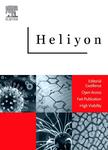版权所有:内蒙古大学图书馆 技术提供:维普资讯• 智图
内蒙古自治区呼和浩特市赛罕区大学西街235号 邮编: 010021

作者机构:IRCCS Rizzoli Orthopedic Institute Medical Technology Laboratory Bologna 40138 Italy Medical Physics Specialization School University of Bologna Bologna 40127 Italy Department of Radiology IRCCS Azienda Ospedaliera-Universitaria di Bologna Bologna 40138 Italy Medical and Surgical Department of Digestive Hepatic and Endocrine-Metabolic Diseases IRCCS Azienda Ospedaliera-Universitaria di Bologna Bologna 40138 Italy Department of Physics and Astronomy University of Bologna Bologna 40127 Italy Nuclear Medicine IRCCS Azienda Ospedaliero-Universitaria di Bologna Bologna 40138 Italy IRCCS Institute of Neurological Sciences of Bologna Data Science and Bioinformatics Laboratory Bologna 40139 Italy Department of Medical and Surgical Sciences University of Bologna Bologna 40138 Italy Dipartimento Diagnostica per Immagini AUSL Romagna UOC Radiologia Faenza Faenza 48018 Italy Academic Radiology Department of Translational Research and of New Surgical and Medical Technologies University of Pisa Pisa 56126 Italy
出 版 物:《Heliyon》 (Heliyon)
年 卷 期:2025年第11卷第1期
页 面:e41404页
主 题:CT Machine learning Medical imaging PET Radiomics Rectal cancer Recurrence
摘 要:Background: The modern approach to treating rectal cancer, which involves total mesorectal excision directed by imaging assessments, has significantly enhanced patient outcomes. However, locally recurrent rectal cancer (LRRC) continues to be a significant clinical issue. Identifying LRRC through imaging is complex, due to the mismatch between fibrosis and inflammatory pelvic tissue. This work aimed to develop a machine learning model for predicting LRRC using radiomic features extracted from 18F-FDG Positron Emission Tomography/Computed Tomography (PET/CT). Methods: CT and PET images of PET/CT examinations were retrospectively collected from 44 patients, with 29 cases of recurrence (66 %) and 15 cases with no local recurrence (34 %). The whole analysis was conducted separately for CT and PET images to evaluate their different predictive power. Radiomic features were extracted from suspected lesion volumes identified by physicians and the most relevant radiomic features were selected to predict the presence or absence of LRRC. Feature selection was performed using a novel approach derived from gene expression analysis, based on the DNetPRO algorithm. The prediction was done using a Support Vector Classifier (SVC) with a 10-fold cross-validation. The efficiency of the pipeline in predicting LRRC was evaluated according to the sensitivity, specificity, Balanced Accuracy Score (BAS) and Matthews s Correlation Coefficient (MCC). Results: CT features were found to be the most predictive, showing a sensitivity of 0.80, a specificity of 0.82, a BAS of 0.81 and an MCC of 0.61. PET features obtained a sensitivity of 0.93, a specificity of 0.61, a BAS of 0.77 and a MCC of 0.52. The combination of PET and CT features obtained a sensitivity of 0.80, a specificity of 0.75, a BAS of 0.77 and a MCC of 0.53. Conclusions: To the best of our knowledge, the DNetPRO algorithm was applied for the first time to medical image analysis and proved suitable for the selection of radiomic featu